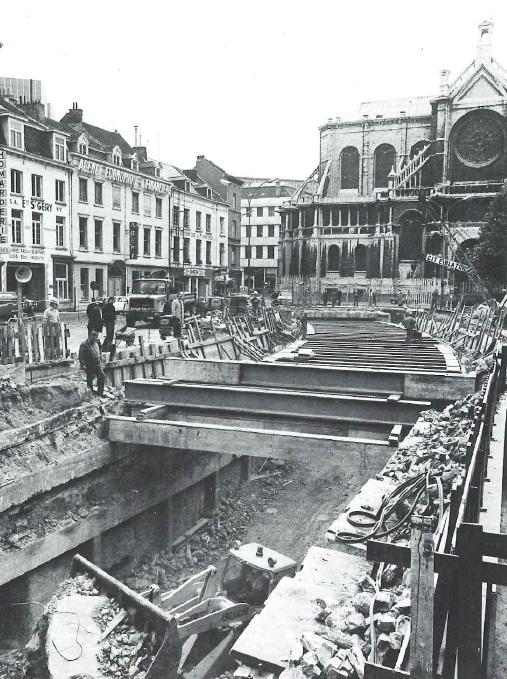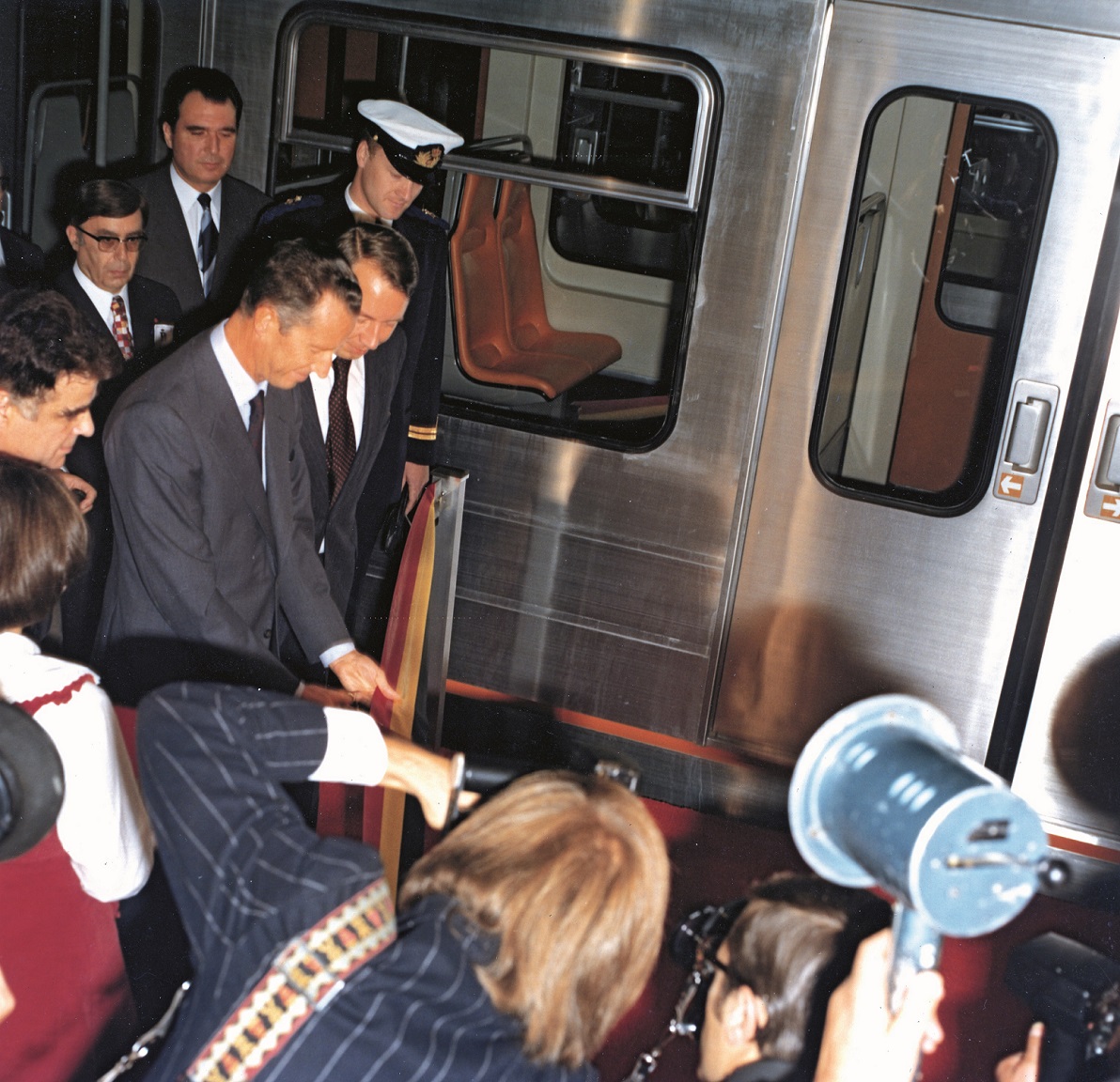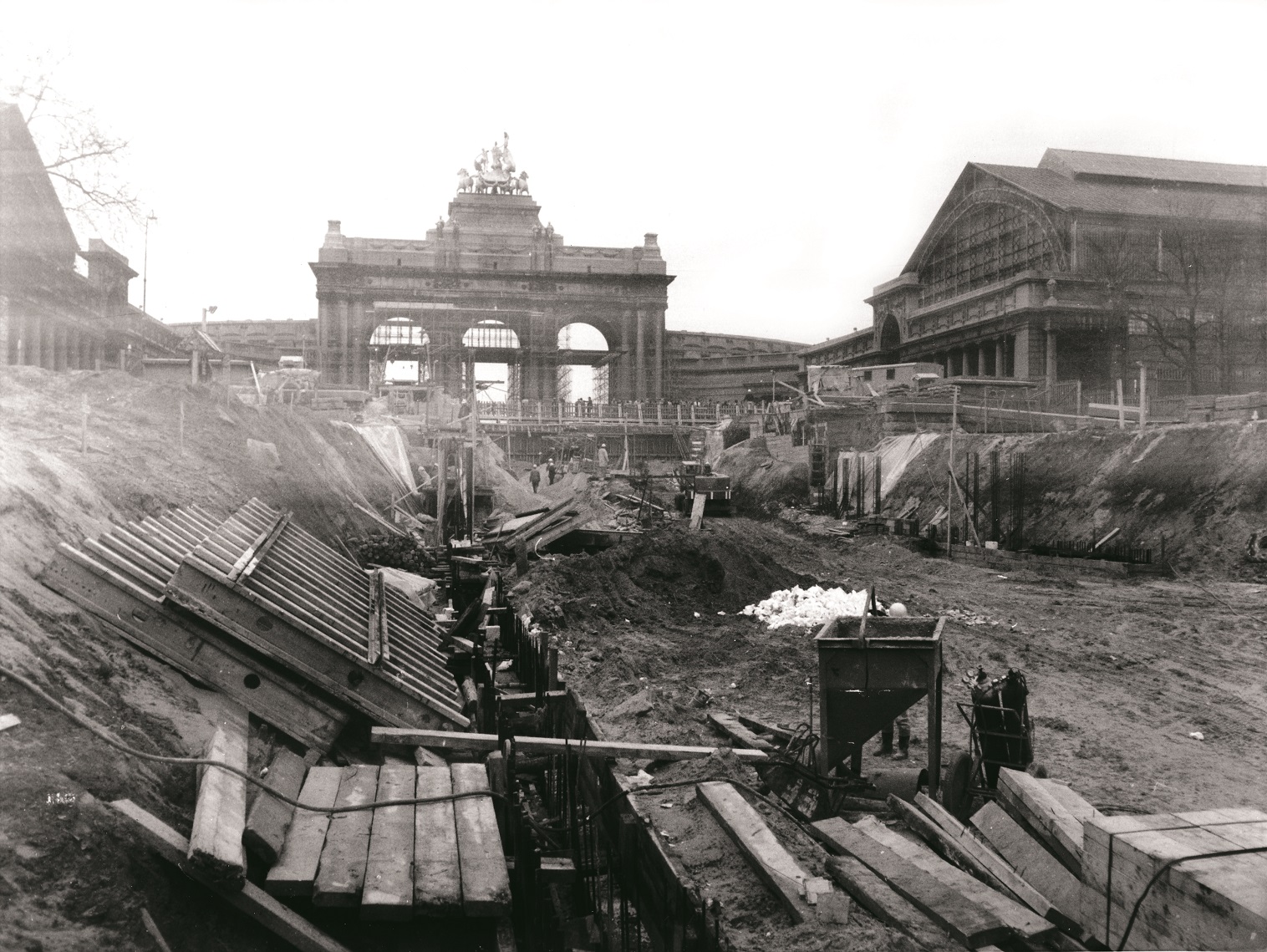Belgium was a global pioneer in trains, creating the first railway on the European continent in 1834, a flourishing locomotive manufacturing industry, and later the densest rail, light rail and tram network in the world. Belgian companies were among the global leaders in designing and building rail systems, from the Paris Metro system to tram services in Kyiv at the turn of the century.
Yet Brussels did not start building its own metro system until the 1960s, with the first pre-metro stations opening in 1969 and the first metro stations in 1976.
The late start was down to geology. Brussels is built on deep and extensive marshes, and the late-19th century technology was not up to the task of creating a viable underground network under these conditions.
Indeed, while the first metro scheme was developed in 1892, it never got past the planning stage, even with the enthusiastic support of King Leopold II. Meanwhile, other big cities had already gone ahead with their subway systems: the Tube in London, the world’s oldest underground, opened in 1863; Athens in 1869; Istanbul in 1875; Budapest in 1896 and Paris in 1900.
Trams were the precursors of the Brussels Metro. The first ones were horse-drawn and began operating in 1849. When Avenue Louise was completed in 1847 as a thoroughfare linking the city’s pentagon to the Forêt de Soignes, it included the first tram line that ran from Porte de Namur to the Bois de la Cambre. Building the avenue meant knocking down hills and filling valleys to ensure it was level over its entire length, allowing horses to pull their heavy loads.
The tramline was a huge success, as well-heeled day-trippers used it for their sylvan excursions. Other routes were laid down, and by 1885, there was 37km of tram tracks in Brussels. Horses were replaced by steam engines in 1876, which in turn gave way to electric motors in 1893. Eventually, some of the trams went underground to become the pre-metro, the forerunner to the Brussels Metro.

The works under Place Saint Catherine
In the 1950s, as part of the planning for the 1958 World's Fair, Brussels got the first rudimentary piece of an underground network, when a tunnel was built under the Midi Station to give trams their own right of way under that congested area. To ease into the creation of a completely new underground network, Brussels started putting portions of surface tramlines underground.
The first piece of the pre-metro opened in 1969: a tunnel linking six stations and connecting the central city to the European Quarter. Over the next six years, three more pre-metro sections were built. And in 1976, the original Pre-Metro section, having been converted for heavy-metro use, opened as a full-scale metro.

King Baudouin opening the metro in 1976
On September 20, 1976, King Baudouin was the first person through the turnstiles followed by an enormous crowd of excited locals. The Brussels transport authority, STIB/MIVB, wanted this to be a day to remember and spent a whole year planning a huge party including 150 events for the day: music, dance, performances, food demonstrations and stars, including an underground concert by harmonica icon Toots Thielemans.
One million people took to the streets for this public party, which, in its intensity and joy, reminded many of the day when Brussels was liberated at the end of the Second World War. The bright orange and yellow colour scheme seemed to underline the modernity of the network, and the spanking new aura contrasted with existing undergrounds in other cities.
Orange to silver
There have been seven generations of metro trains, from the M1 through the M7. The M1 was built at La Brugeoise et Nivelles (later to become Bombardier Transportation) and decorated in the bright orange so characteristic of the mid-1970s colours. It was ultra-modern in its material and construction, made of lightweight aluminium, and rather than being soldered together, was riveted like an airplane to avoid fissures.
At the same time, CFC was building the M2 in La Louvière and the electric components for both the M1 and M2 were made by ACEC (now Alstom) in Charleroi. The fact that all rolling stock, a total of 90 cars, is still in use 46 years later attests to the quality of the manufacturing.
The M3 in the 1980s was more sophisticated and delivered a smoother ride. The M4 in the 1990s was even more advanced, but budgetary constraints meant these were just the carriages: they had to be combined with either M2 or M3 driving cars. By the early 2000s the final orange car, the M5, removed the handles that needed to be pulled to open the doors, and replaced them with a door-opening button.
The M6, which debuted in 2007, provided a generational technological shift. Whereas the first five models have complicated motors and simple electronics, the M6 is fitted with a motor that uses a continuous alternating current, a simpler technology that consumed less electricity. But it requires more complex, advanced electronics.
The design and the layout of the train also changed. Built by Spanish firm CAS, the M6 is known as a boa because the cars were no longer isolated: travellers can walk through the entire length of the 94m-long train, as it snakes through the tunnels. The orange was gone too, as Antwerp designer Axel Enthoven switched to silver and bronze, while the boxy shape of the trains gave way to a more aero-dynamic angled look.
The latest, the M7, entered service in mid-2021, with wider doors than the M6, a seating configuration that allows for easier passenger flow, and no buttons to push, as the doors open automatically. The M7 cars are also equipped for future driverless operation, which is set to increase the number of trains a line can handle. As for its colours, in 2017, the public got to vote between silver and bronze, with silver being the overwhelming choice.

